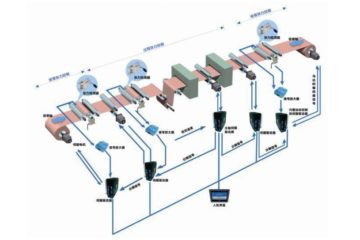Any company that wants to stand in a certain market needs more than just an understanding of the current market, but more importantly, a grasp of the future market, as well as the printing market. Here, we will be written by Richard Romano, Canon’s sponsored printing market 2020 vision for everyone to use as a reference.
Introduction
In recent years, we have witnessed tremendous changes in the print market. It is foreseeable that the changes in the entire market will be even more dramatic by 2020. As practitioners, we can’t just focus on what has happened in the past, but should rethink how the company’s business, services, and products should go in the future. Only in this way can we accurately locate what equipment will be purchased in the future or even reshape the corporate culture. The white paper focuses on the role of the printing industry in modern society, the changing demand for print, and the impact of new technologies on the printing industry.
Introduction: Yesterday, Today and Tomorrow
The market is dynamic. Products that meet the needs of today’s consumers may be eliminated tomorrow. Consumer tastes, culture and other factors will affect people’s demand for products, but the most important of all factors is technology. The transistor radio that emerged in 1954 was a huge success, and the vacuum tube radio, which also had great success, was squeezed out of the market. However, vacuum tube radios were the main form of entertainment in the 1930s and 1940s. Similarly, transistor radios have gradually been replaced by smartphones and other digital playback devices in today’s society.
For the printing industry, technological change is equally huge. Twenty years ago, people’s requirements for print were very different from the present. At that time, few people might think of digital printing, inkjet technology, and variable data.
Of course, the alternation of old and new technologies is not a day’s work. Offset technology appeared in 1904, but it was known that it was accepted by commercial printing in the 1960s and 1970s. Digital printing appeared in the 1990s and was only used for some low-quality prints when it first appeared. It is known that it is now slowly replacing traditional printing methods, especially offset printing. Don’t forget that traditional offset printing products such as magazines are gradually being electronicized. All you need is an Ipad.
1998 was a turning point in the printing industry, especially in the commercial printing industry. This year, the Internet began to explode, which led to many industries including the printing industry. More and more companies need to attract “traffic” to their websites, and obviously print is an important way.
At this point, google appeared, and immediately became synonymous with “web search engine.” With this new way of access, people no longer need to go through the print to find those possible websites, and the Internet’s own ecosystem has gradually improved. Since then, the traditional printing industry has begun to decline. As can be seen from the figure below, the printing industry has declined since 1998 and 1999.

Of course, the alternation of old and new technologies is not a day’s work. Offset technology appeared in 1904, but it was known that it was accepted by commercial printing in the 1960s and 1970s. Digital printing appeared in the 1990s and was only used for some low-quality prints when it first appeared. It is known that it is now slowly replacing traditional printing methods, especially offset printing. Don’t forget that traditional offset printing products such as magazines are gradually being electronicized. All you need is an Ipad.


